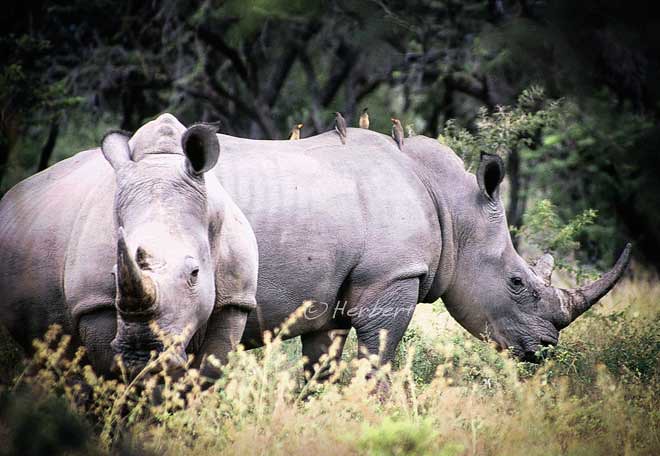
Location: Matobo national Park, Zimbabwe, Africa (20� 33' 0? S, 28� 30' 28.8? E)
Date: 29 April 2001; 4.15pm
Camera: (analogue) Canon 500N with slides and scanned
Rhinoceros poaching has reached an all-time high. In 2010, 333 rhinos were slain by poachers for their valuable horns, compared to 122 in 2009. Poaching is driven mainly by the demand of the rhino horns in Asia for its perceived medicinal properties. However extensive research and analysis have established that the horns do not contain any medicinal or aphrodisiac effects. One would appreciate the attractiveness of poaching when today weight-for-weight, rhino horn is more valuable than gold. Most of the rhinos poached are white rhinos- which are considered a near-threatened species- but a few endangered black rhinos were also slain. Stopping the poaching has become more difficult as poachers employ high-tech methods such as helicopters, prescription tranquillizers, night-vision goggles and high-powered rifles. Conservationists and game park owners have sometimes resorted to extreme measures to protect the rhinos such as poisoning the rhino horns with cyanide. Anyone consuming a poisoned horn will be poisoned by the cyanide.